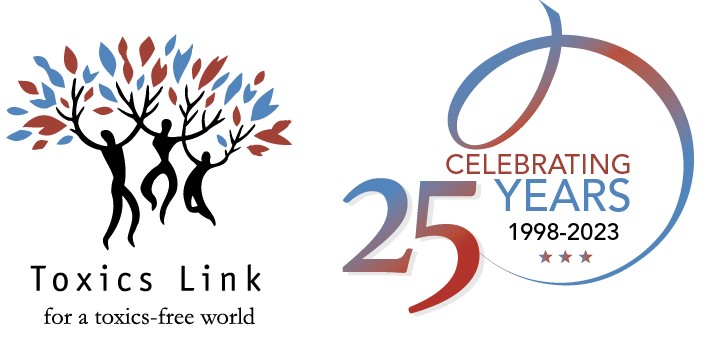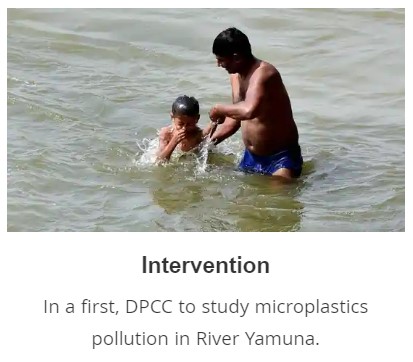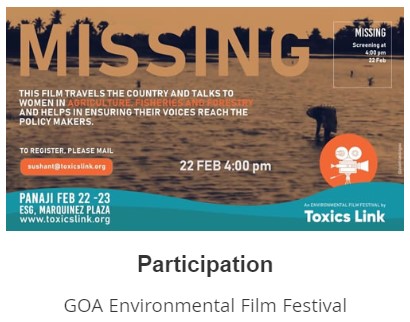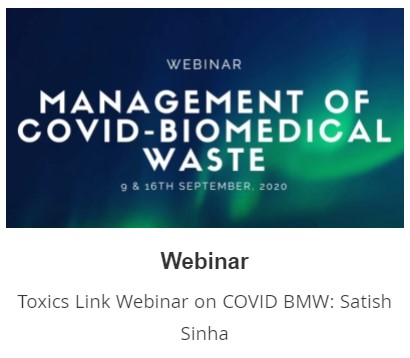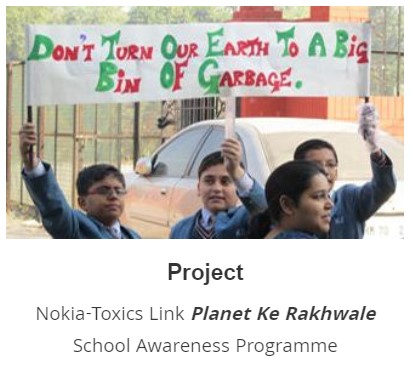GROUND WATER CONTAMINATION
GOVERNMENT OF INDIA MINISTRY OF JAL SHAKTI
DEPARTMENT OF WATER RESOURCES, RIVER DEVELOPMENT & GANGA REJUVENATION
LOK SABHA UNSTARRED QUESTION NO. 3653
ANSWERED ON 10.08.2023
GROUND WATER CONTAMINATION
3653.SHRI SYED IMTIAZ JALEEL
Will the Minister of JAL SHAKTI be pleased to state:
(a) whether India is the worst groundwater contaminated country in the world as more than twenty States of the country are fluoride or arsenic affected which is causing cancer, skin diseases and crippling disease besides affecting reproductive health of the inhabitants;
(b) if so, the details thereof along with the details of districts which are arsenic or fluoride affected particularly in the State of Maharashtra;
(c) the remedial measures taken/schemes/projects implemented by the Government to lessen the effect of arsenic or fluoride and to provide safe and clean drinking water to the inhabitants of affected areas; and
(d) the details of funds allocated/utilised for this purpose during the last three years and the current year,scheme and year-wise?
ANSWER
ANSWER THE MINISTER OF STATE FOR JAL SHAKTI (SHRI BISHWESWAR TUDU)
(a) & (b) No such information is available. The Central Ground Water Board (CGWB) generates ground water quality data annually on regional scale through ground water quality monitoring throughout the country. This monitoring indicates the occurrence of Fluoride and Arsenic beyond the BIS (Bureau of Indian Standards) permissible limits for human consumption in isolated pockets in certain parts of the country. Details are given at Annexure I. In Maharashtra, no Arsenic contaminants have been reported, however, Fluoride contaminants have been reported in 22 districts (isolated pockets) in Maharashtra. Details are given at Annexure II.
(c) & (d) Water being a State subject planning, approval and implementation of drinking water supply schemes, lies with State/UT Governments, however, Central Government is implementing Jal Jeevan Mission (JJM) – Har Ghar Jal in rural areas and Atal Mission for Rejuvenation and Urban Transformation (AMRUT) in urban areas to provide safe water to citizens of the country.
Government of India is implementing ‘Jal Jeevan Mission (JJM) – Har Ghar Jal’, since August,
2019, in partnership with States, to make provision of potable tap water supply in adequate quantity, of prescribed quality and on regular & long-term basis to every rural household in the country. Under JJM, while allocating the funds to States/ UTs, 10% weightage is given to the population residing in habitations affected by chemical contaminants including Arsenic and Fluoride. Fund released to States/ UTs under JJM can also be utilized for taking up schemes in quality-affected habitations including Arsenic and Fluoride-affected, on priority.
Further, States/ UTs have been advised to plan and implement piped water supply schemes based on alternative safe water sources for the villages with water quality issues. Since, planning, implementation and commissioning of piped water supply scheme based on a safe water source may take time, purely as an interim measure, States/ UTs have been advised to install community water purification plants (CWPPs) especially in Arsenic and Fluoride affected habitations to provide potable water to every household at the rate of 8–10 litre per capita per day (lpcd) to meet their drinking and cooking requirements.
In addition, as reported by States/UTs as on date, safe drinking water has been made available in all Arsenic-affected and Fluoride affected habitations.
Year-wise details of central funds allocated, fund utilization reported under Jal Jeevan Mission (JJM) during 2020-21, 2021-22, 2022-23 and 2023-24, as on 07/08/2023, is given at Annexure III..
AMRUT was launched by Central Government on June 25, 2015, in 500 selected cities across the country covering around 60% of the Urban Population and is being implemented in collaboration with States/UTs. AMRUT focuses on development of basic urban infrastructure in the selected cities in the sectors of Water Supply, Sewerage and Septage Management, Storm Water Drainage, Non-Motorised Urban Transport, and Permeable Green Spaces & Parks. Year-wise details of Central Assistance released and utilized ((Utililization certificate – UC received) under AMRUT during 2020-21, 2021-22, 2022-23 and 2023-24 are given at Annexure IV.
Further, AMRUT 2.0 has been taken upwith target of making cities water secure through providing water tap connections to all households in all of about 4902 Urban Local bodies and provision of universal coverage of Sewerage and Septage management in 500 AMRUT cities. CA released and Utilised (UC received) under AMRUT 2.0 during 2020-21, 2021-22, 2022-23 and 2023-24 is given at Annexure IV.
In addition, CGWB has identified Arsenic safe deeper aquifer zones and Arsenic safe wells have been constructed using innovative cement sealing technique in parts of West Bengal, Bihar and Uttar Pradesh. So far, 522 exploratory wells (40 in Bihar, 188 in West Bengal and 294 in Uttar Pradesh) tapping Arsenic safe aquifers have been constructed (till March 2022) and handed over to concerned States for use. In addition, the innovative cement sealing technique has been shared with the States for their use.
ANNEXURE-I ANNEXURE REFERRED TO IN REPLY TO PART (a) & (b) OF UNSTARRED QUESTION NO. 3653 TO BE ANSWERED IN LOK SABHA ON 10.08.2023 REGARDING “GROUND WATER CONTAMINATION”.
States-wise Number of Partly Affected Districts with Fluoride and Arsenic Contaminants (isolated pockets) in Ground Water of India
|
S.No. |
State/ UT |
Fluoride (above 1.5 mg/l) |
Arsenic (above 0.01 mg/l) |
|
1 |
Andhra Pradesh |
19 |
7 |
|
2 |
Telangana |
29 |
1 |
|
3 |
Assam |
17 |
21 |
|
4 |
Bihar |
17 |
27 |
|
5 |
Chhattisgarh |
23 |
4 |
|
6 |
Delhi |
8 |
5 |
|
7 |
Gujarat |
30 |
12 |
|
8 |
Haryana |
21 |
18 |
|
9 |
Himachal Pradesh |
2 |
1 |
|
10 |
Jammu & Kashmir |
4 |
3 |
|
11 |
Jharkhand |
17 |
4 |
|
12 |
Karnataka |
31 |
3 |
|
13 |
Kerala |
6 |
1 |
|
14 |
Madhya Pradesh |
44 |
9 |
|
15 |
Maharashtra |
22 |
— |
|
16 |
Manipur |
1 |
2 |
|
17 |
Meghalaya |
5 |
—- |
|
18 |
Nagaland |
3 |
—- |
|
19 |
Odisha |
26 |
5 |
|
20 |
Punjab |
19 |
17 |
|
21 |
Rajasthan |
33 |
10 |
|
22 |
Tamil Nadu |
30 |
14 |
|
23 |
Tripura |
3 |
3 |
|
24 |
Uttar Pradesh |
42 |
45 |
|
25 |
Uttarakhand |
1 |
5 |
|
26 |
West Bengal |
12 |
11 |
|
27 |
Daman & Diu |
1 |
1 |
|
28 |
Puducherry |
— |
1 |
|
|
Total |
Parts of 466 districts in 27 States & UTs |
Parts of 230 districts in 25 States & UTs |
*Updated with the Water Quality data of May 2022.
ANNEXURE-II ANNEXURE REFERRED TO IN REPLY TO PART (a) & (b) OF UNSTARRED QUESTION NO. 3653 TO BE ANSWERED IN LOK SABHA ON 10.08.2023 REGARDING “GROUND WATER CONTAMINATION”
Partly Affected Districts with Fluoride Contaminants (isolated pockets) in Ground Water of Maharashtra
|
State/UT |
Fluoride
(above 1.5 mg/l) |
|
Maharashtra |
Ahmednagar, Amravati, Beed, Chandrapur,
Bhandara, Dhule, Gadchiroli, Gondia, Jalna, Nagpur, Nanded, Parbhani, Ratnagiri, Sangli, Satara, Sindhudurg, Solapur, Wardha, Washim, Yavatmal, Hingoli, Nandurbar |
ANNEXURE-III ANNEXURE REFERRED TO IN REPLY TO PART (c) & (d) OF UNSTARRED QUESTION NO.
3653 TO BE ANSWERED IN LOK SABHA ON 10.08.2023 REGARDING “GROUND WATER CONTAMINATION”
Jal Jeevan Mission: Central fund allocated, drawn and reported utilization in 2020-21, 2021-22,
2022-23 and 2023-24 [As on 07/08/2023]
(Amount in Rs. Crore)
|
Year |
Central share |
Expenditure under State share |
||||
|
Opening Balance |
Allocation |
Released |
Total Fund Available |
Utilization reported by States/ UTs |
||
|
2020-21 |
6,432 |
23,033 |
10,920 |
17,352 |
12,540 |
7,800 |
|
2021-22 |
4,813 |
92,308 |
40,009 |
44,822 |
25,843 |
18,532 |
|
2022-23 |
19,319 |
1,00,789 |
54,742 |
74,061 |
50,380 |
39,576 |
|
2023-24* |
23,105 |
1,32,937 |
13,710 |
36,815 |
25,449 |
15,958 |
* As on 07/08/2023 Source: JJM-IMIS
ANNEXURE-IV ANNEXURE REFERRED TO IN REPLY TO PART (c) & (d) OF UNSTARRED QUESTION NO.
3653 TO BE ANSWERED IN LOK SABHA ON 10.08.2023 REGARDING “GROUND WATER CONTAMINATION”.
CA released and utilised for project implementation, during last three year under AMRUT.
Amount in ₹. crores
|
Financial Year |
CA Released |
UC Received |
|
2020-21 |
6,146.72 |
5,213.92 |
|
2021-22 |
6,112.89 |
4,401.88 |
|
2022-23 |
961.17 |
– |
|
Current FY: 2023-24 |
991.09 |
– |
CA released and utilised for project implementation, during last three year under AMRUT 2.0 Amount in ₹. crores
|
Financial Year |
CA Released |
UC Received |
|
2020-21 |
– |
– |
|
2021-22 |
455.78 |
68.28 |
|
2022-23 |
5,461.98 |
149.16 |
|
Current FY: 2023-24 |
276.57 |
– |
*****
State/ UT wise Bio-medical Waste Generation in 2020 and 2021 (in Kg/Day)
|
S.No. |
States/ Union Territory |
Year 2020 |
Year 2021 |
|
1 |
Andaman Nicobar |
536 |
543 |
|
2 |
Andhra Pradesh |
25029 |
19720 |
|
3 |
Arunachal Pradesh |
354 |
348 |
|
4 |
Assam |
8236 |
8421 |
|
5 |
Bihar |
27846 |
20549 |
|
6 |
Chandigarh |
5729 |
5374 |
|
7 |
Chhattisgarh |
7234 |
7907 |
|
8 |
Daman &Diu and Dadra & Nagar Haveli |
450 |
554 |
|
9 |
Delhi |
23200 |
25828 |
|
10 |
Goa |
1273 |
1129 |
|
11 |
Gujarat |
49492 |
52800 |
|
12 |
Haryana |
19217 |
21436 |
|
13 |
Himachal Pradesh |
3546 |
4130 |
|
14 |
Jharkhand |
8407 |
7524 |
|
15 |
J & K |
5942 |
7664 |
|
16 |
Karnataka |
82604 |
77639 |
|
17 |
Kerala |
40408 |
61136 |
|
18 |
Ladakh |
43 |
35 |
|
19 |
Lakshadweep |
1137 |
87 |
|
20 |
Madhya Pradesh |
20009 |
19754 |
|
21 |
Maharashtra |
82146 |
80314 |
|
22 |
Manipur |
922 |
1166 |
|
23 |
Meghalaya |
1557 |
1287 |
|
24 |
Mizoram |
863 |
804 |
|
25 |
Nagaland |
892 |
1007 |
|
26 |
Odisha |
15304 |
16168 |
|
27 |
Puducherry |
4 360 |
4639 |
|
28 |
Punjab |
16998 |
18490 |
|
29 |
Rajasthan |
18912 |
19170 |
|
30 |
Sikkim |
478 |
545 |
|
31 |
Tamil Nadu |
35270 |
45216 |
|
32 |
Telengana |
23810 |
24235 |
|
33 |
Tripura |
3853 |
1940 |
|
34 |
Uttarakhand |
7617 |
6891 |
|
35 |
Uttar Pradesh |
64038 |
71264 |
|
36 |
West Bengal |
43513 |
42287 |
|
Total |
|
651225 |
678001 |
|
|
|
|
|
*Kg/Day –Kilograms per day (Source-Central Pollution Control Board)
